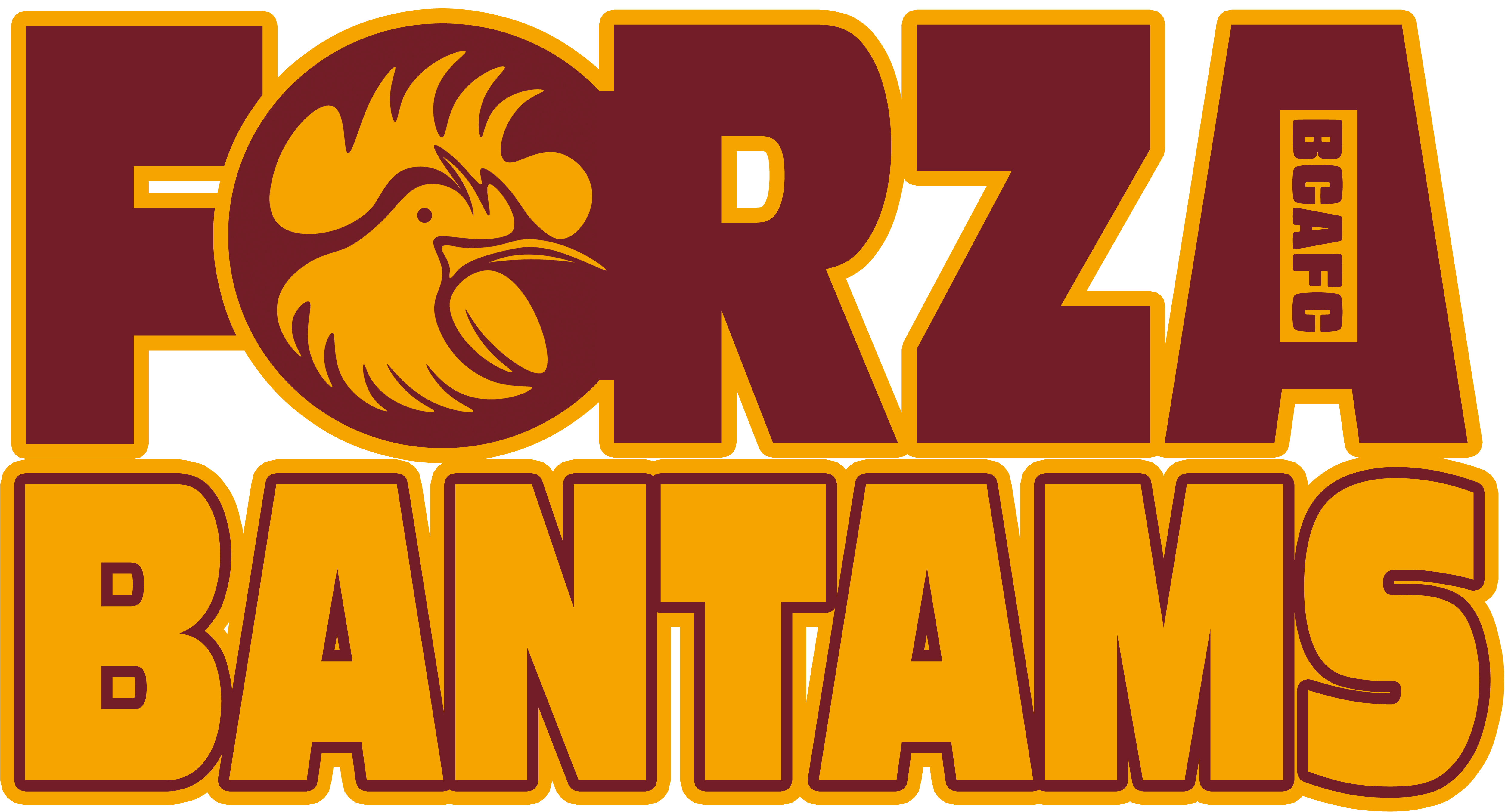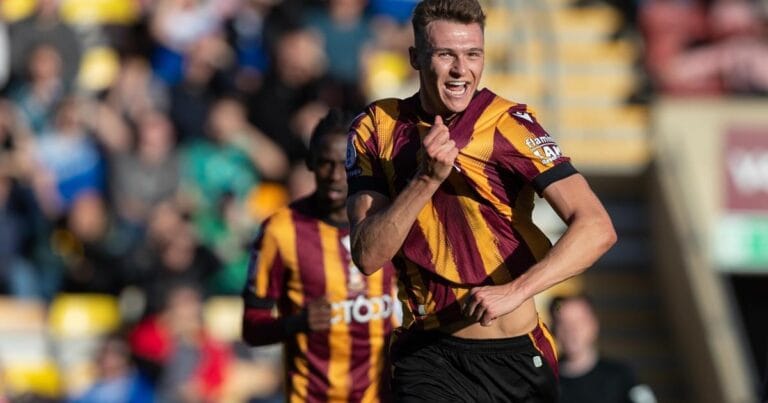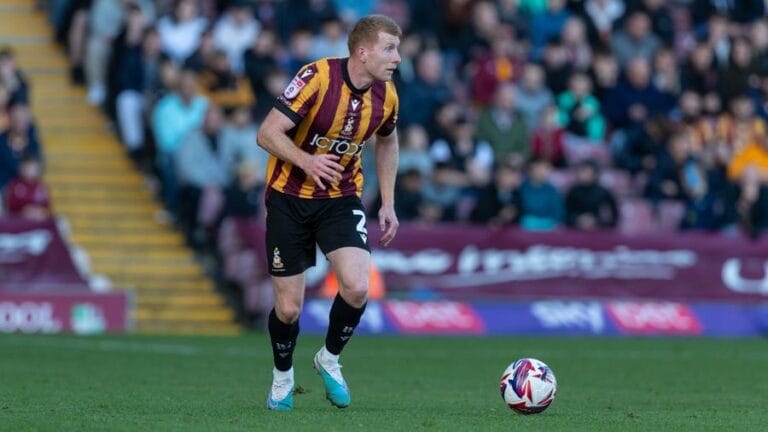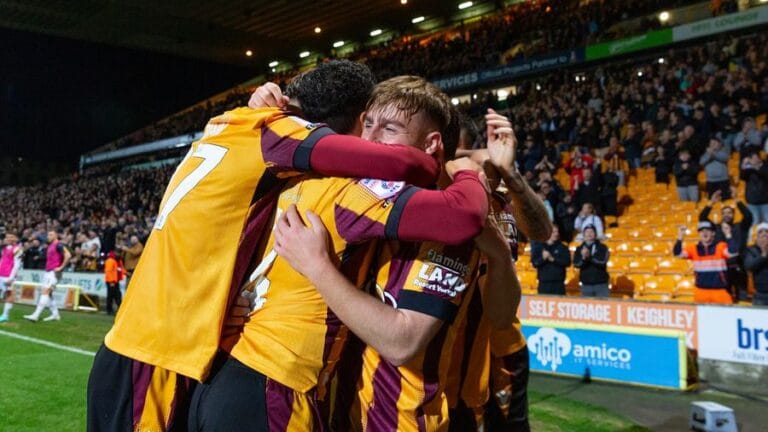In this four part article I will be using various sources and examples to demonstrate the dilemma facing Mark Hughes in the summer when it comes to deciding how best to build a squad that is capable of competing in the top seven in League Two. In the final part I will list the squad, with their contract expiry dates and invite you to decide for yourself which players, if you were in his position, you would choose to keep or let go. It sounds simple doesn’t it, after all, we have an idea of those players that we think deserve to be here next season and those we don’t. Naturally there are a few that fall between the lines that will take a bit more thinking about, but all in all, you should have a pretty good idea.
I know it won’t happen, but if Mark Hughes was to renew the contracts of the all of the out of contract players in the summer, it would leave him with practically nothing to spend on wages for new players unless Stefan Rupp is to invest money from his own pocket into the playing budget. This is something that is by no means guaranteed, in fact, looking at the budgets of our previous managers in League Two, it hasn’t been the case at all. They’ve had to cut their cloth accordingly either on a lower budget than the previous season, or, as was the case with Derek Adams, with exactly the same budget as the last manager. So for Mark Hughes, some of his thinking will be based on how much a particular player is being paid, or is willing to take to remain at the club. Put simply, just because you might consider Charles Vernam one of our best players, it doesn’t make it prudent to keep him at the club.
In order to get a better understanding of the dilemma Mark Hughes faces, and that of Derek Adams before him, it is important to go back a few seasons to compare and contrast what has been happening at the club and look at how Mark Hughes still has to overcome the same issues today that have existed since Edin Rahic left the club in a mess. It would appear that there have been two key issues that have held the Bantams back since, the first concerns the players that were still under contract at the time he left and then the knock-on effect of having to wait until contracts expire in most cases, before they can be replaced. The playing budget has also been reduced twice since then, which has meant managers from Gary Bowyer to Derek Adams have in reality required two summer transfer windows to sort out, something that hasn’t been afforded to any of them.
In Part Four I will provide you with a list of the Bradford City squad, the contract expiry dates and the players wages, so you can figure out for yourself what you would do if you were Mark Hughes.
A quick disclaimer for those of you who still believe that this club is better off under the ownership of Stefan Rupp than anybody else, who will no doubt require an unrealistic level of proof of accuracy in order to believe anything that doesn’t fit with the narrative that Stefan Rupp is regularly putting money into our club and is a pair of safe hands. The playing budget is something that can, to a reasonable degree be worked out using the information that is publicly available, whilst basing some figures on averages to get us to a figure that would be as close as we can get without actually having an official figure to work on. It starts at the official figure we do have of £2.7 million that covers the players and the first team coaching staff. This was published by Bradford City Football Club, so is a reasonable starting point. If you want to dispute them, you are welcome to provide calculations or evidence that says different, but merely saying “we have a competitive budget” is not evidence, as a competitive budget could be anywhere from the 12th highest budget in League Two, to the highest budget in League Two. Do you believe Salford City have the highest budget in League Two? I do, but ask yourself why are you prepared to credibly believe that, when there’s the same lack of real evidence to support that? Even though we can safely say it is true.
With Bradford City having released their financial report for 2021, we now have an official starting point to work from, that having looked at it, does suggest that the sources I will use for individual players wages are there or there about in terms of their accuracy. So let me start by quoting what the Bradford City Official website has stated “First and foremost, the club must remain financially stable and be able to generate income from its own various activities and cost centres, so that it does not need to rely on external sources such as shareholders or other lenders”, shareholders would include Stefan Rupp. So for those of you that think he is the reason the Bantams can keep functioning as a football club, or that he is putting his own money into the playing budget, think again. It is a statement of intent at the very least that the club is expected to make its own money without any input from the owner. Looking at our previous transfer ins and outs since Gary Bowyer became manager, this appears to have been the case since (at least nothing significant enough to make any difference to our league position). Since then it looks like nothing has gone into the club directly from Stefan Rupp up until the writing of this article.
From a personal viewpoint, this isn’t my main issue with him, after all you could argue “why should he?”. But in response to that, I’d point out he was responsible for the mess made by Edin Rahic, so has a responsibility to get us back to where Bradford City were before that happened. And to pretend that Stefan Rupp cannot be blamed for the sins of Edin is just closing your eyes to the fact that he actively supported Edin in what he did before realising that he had blown the money that he had actually paid out of his own pocket. And until Stefan actively puts his hand into his pocket to offset this, and stops allowing the sacking of managers every time the going gets tough, we are doomed to carry on our downwards trajectory. Let me take you back in time a few years and explain why.
At the beginning of the reign of Rupp and Rahic they did invest a decent sum of their own money, with in the region of £500,000 put into the club in year one. It is also worth noting that this was before Edin Rahic, with the full backing of Stefan Rupp, had properly got his feet under the table and started taking his interfering with matters that are usually entrusted to a manager or a head coach and a director of recruitment, to the next level. This is important, because at first Greg Abbott and Stuart McCall would recommend the players they wanted to come to Bradford City and Stefan & Edin would say yes or no to it. But as time went on, there were clearly a number of signings that Edin was recommending that came to the club, sanctioned by Edin & Stefan alone.

So with an increased budget and with money invested by Rupp & Rahic we saw players join the club for transfer fees, something that was almost unheard of under the stewardship of Julian Rhodes & Mark Law. Bradford City paid undisclosed fees for Romain Vincelot & Alex Jones, the latter may not have worked out, but at the time he did look like an ambitious signing. Nat Knight-Percival, Nicky Law, Colin Doyle and Matthew Kilgallon also looked like positive signings at the time. The January transfer window saw the departure of James Hanson to Sheffield United, but he was replaced by Charlie Wyke from Carlisle United. All of these will most certainly have been players that both McCall and Abbott will have wanted to join the club, with one exception, Vincent Rabiega from RB Leipzig of Germany. Can you, hand on heart say that Stuart McCall had a scouting network that just happened to include Germany? Or is it more likely that this was a player that Edin Rahic had found in his homeland, that he felt would do well at Valley Parade? A player that since leaving Bradford City was most recently plying his trade in the 5th tier of the German football league system.
Edin was keen to bring in more players from Germany and part of his strategy was also to recruit players for the future. And the following season there were more names that you have to question whether Stuart McCall and Greg Abbott would have suggested such as Lachlan Barr, Joel Grodowski, Lukas Raeder & Kai Bruenker all were all woefully below the standard required to play in the EFL, let alone League One, and their subsequent career trajectory proves that beyond doubt. But at this point the kicker was that we had lost Stephen Darby, Mark Marshall, Rory McArdle and James Meredith. We would never recover from this and sooner or later with only Jake Reeves, Adam Chicksen and Shay McCartan brought in as players that could be described on paper at least, as decent signings (without the benefit of hindsight), something was going to give if this situation carried on. And it would, starting a new trend of sacking the manager every five minutes the moment results stopped going our way. Stuart McCall was sacked on February 5th 2018. It was the first significant run of poor form, but it hadn’t been a major set-back. Simon Grayson was brought in as his replacement but by the summer had figured out that he couldn’t work with Edin Rahic, so he followed McCall out of the door at Valley Parade.

Then came the bizarre choice of Michael Collins as his successor. This was most certainly a choice of manager that would be no more than a puppet to Edin Rahic. This is the moment the fate of Bradford City was sealed and relegation was a certainty, even if the bookies hadn’t realised it. Thomas Isherwood replaced failures from previous trips to Germany, namely Joel Grodowski & Lukas Raeder. Now came more younger players that would end up plying their trade at best in the lower reaches of EFL League Two, or in most cases below the National League, swelling the size of a squad that was already amassing a contemptible number of players that simply weren’t good enough technically, or lacked the mental attributes. One of those was the missing in action Jake Reeves, although, for once this couldn’t be blamed on Edin. All managers will sign players that don’t live up to expectation, and Jake Reeves was one of Stuart McCall’s.
Tom Clare, Joe Riley, Connor Wood & Luca Colville were brought to the club, each lacking any real experience playing first team football in the EFL. Many of the other signings were scattergun with the exception this time of maybe Anthony O’Connor, Sean Scannell & Kelvin Mellor, with the latter proving another dud in a search for a replacement for James Meredith. Michael Collins didn’t even make it to the second week in September before he was sacked, and David Hopkin was soon announced as his replacement. That January transfer window saw the departure of Thomas Isherwood and Kai Breunker.
David Hopkin oversaw a mini-upturn in Bradford City’s fortunes before the team reverted to type, and he announced his resignation with the Bantams looking odds on for the drop from League One. His replacement Gary Bowyer would be the first manager to head into the summer transfer window under the ownership of Stefan Rupp under a budget cut and every other manager from herein would have to cut their cloth accordingly, with no support from the now sole owner. The dilemma for Bowyer was a financial one, with many players that were responsible for the abject failure and for clubs relegation to League Two, remaining under contract for another season. It was not like there were teams queuing up to take them off of his hands. The reality was that if Bowyer was going to turn things around (which is debatable) it would have required two summer transfer windows to fix this problem, but unfortunately neither he, or any other manager since has been afforded such a luxury.

Gary Bowyer began shedding some of that wage bill by moving the previous seasons big name signing out on loan, Eoin Doyle. It would eventually lead to a permanent move in the January transfer window to Swindon Town. It was a busy summer of outgoings, Paul Caddis, Adam Chicksen, Billy Clarke, Alex Jones, Nat Knight-Percival, Josh Wright and Sean Scannell all moved on. The big names incoming were Clayton Donaldson and James Vaughan but aside from that, the rest of the incoming players were a mixture of players who would be at the lower end of the wage bill like Tyler French, Sam Hornby, Adam Henley, and to a point Paudie O’Connor (who by todays lower budget standards is in the middle), even Ben Richards-Everton will have hardly featured at the top of the League Two wages table playing for Accrington. What had arrived nowhere near matched the wages that had departed and by January even James Vaughan had gone. With his wage saved, and that of Eoin Doyle’s, we saw only one player that matched one of their wages brought in, and that was Lee Novak with more players that were at the lower end of the wage budget in Kurtis Guthrie & Dylan Mottley-Henry who’s combined wages certainly wouldn’t have matched the wage Doyle was on.
The budget in real terms (including the wage of the manager through to the first team coaches) had been cut from the £3.6million that was given to Michael Collins to just £2.9million. Stuart McCall’s budget was cut to £2.7million a season later. To put the £2million cut McCall inherited into perspective, it is the equivalent of Mark Hughes losing Charles Vernam & Levi Sutton and a Fin Cousin-Dawson from the wage budget and being told he couldn’t use any of that towards next seasons budget. Whatever you think of the players I’m naming is irrelevant, that’s the size of the loss to his resources without the ability to even replace for a cheaper version. Just by looking at what McCall had to work with, it doesn’t take a mathematician to work out what Bowyer had to deal with. Again, both managers were sacked early, Bowyer only just made it past the January transfer window and McCall only got as far as December before he was replace by Mark Trueman and Connor Sellars.
So for those that think Derek Adams had simply squandered his budget on dross, you might want to consider his own budget limitations as a mitigating factor. Managing the budget is more complicated than just signing good players. If you have a wage bill that is made up mainly of players brought to the club to plug holes by the previous manager, there is a chain reaction down the line. Especially when every manager is sacked before he can make it to a second summer transfer window and shed some more contracts to make room for manoeuvre on the transfer market. I suspect that Derek Adams had one eye on his second summer market based on the fact that he signed so many players on loan and on one year deals. In part two I will examine this in more detail, and take you through a mini timeline of events. But when you think about it, on paper, given the low budget he had at Morecambe and how he guided them to promotion, it is unsurprising that Ryan Sparks would look to Derek Adams as the ideal man to lead Bradford City to promotion. After all he had worked on one of the lowest budgets in the EFL with Morecambe and got them promoted via the play-off’s. So with a much higher, albeit still limited budget in terms of the money actually available to him to spend, he looked like just the man to solve the Bradford City dilemma.
In Part Two of this four parter, I will run you through the calculations for the playing budget Mark Hughes will have for 2022/23. The calculations are quite revealing! You’ll also get to see who we really have to thank for having any sort of wage budget at all.









One Response